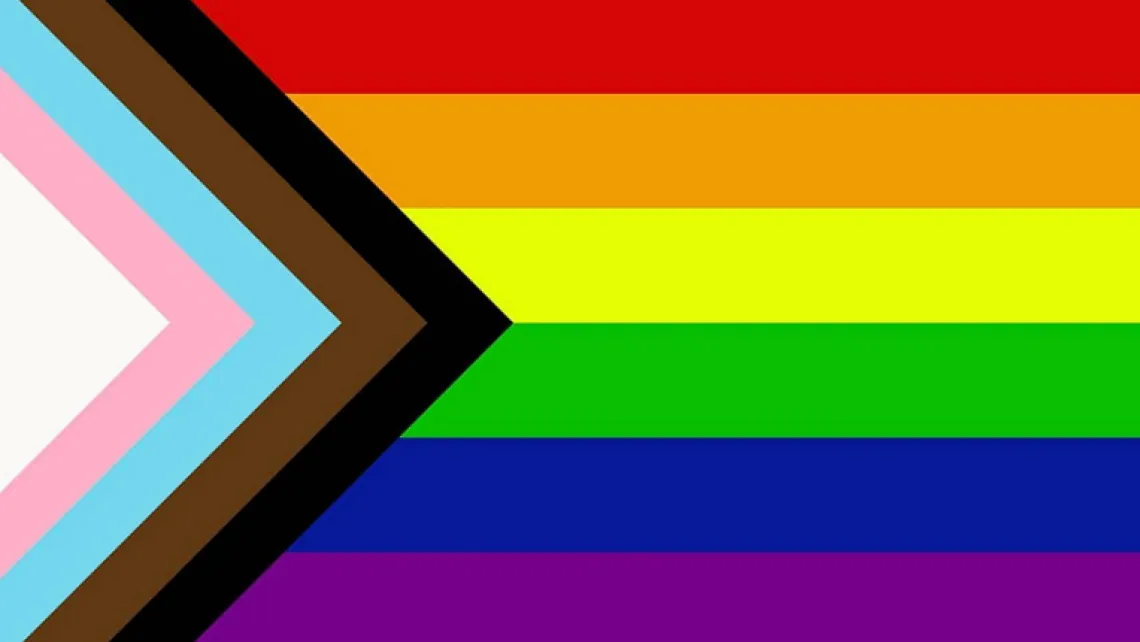"Recommendations for the 'New Normal' for LGBT Persons with Disabilities," by Helena Hurbon


by Helena Hurbon, MA Candidate in Human Rights Practice, University of Arizona
According to the World Health Organization and Centers for Disease Control, COVID-19 vulnerable populations include ethnic and racial minorities, elderly people, people experiencing homelessness, people with disabilities, those that are malnourished, people living in rural communities, and people that are immunocompromised (CDC, 2020a; WHO | Vulnerable Groups, 2020). As comprehensive as this list appears to be, a key group was excluded: LGBT persons.
According to a comprehensive report by OutRight Action International, LGBT persons throughout the globe are experiencing livelihood devastations, disruptions in healthcare access, increased domestic violence, societal discrimination, and abuse of state power (Ruduša, 2020). For this vulnerable population, their experiences of hardship, discrimination, and lack of healthcare access are causing even more vulnerability in regard to both COVID-19 and other mental and physical health conditions (Boston & Ma, 2020).
This article will focus specifically on how COVID-19 poses unique challenges for LGBT persons with pre-existing disabilities. Now, in the time of the “new normal,” governments and lawmakers need to pay special attention to vulnerable populations, particularly those with multiple vulnerabilities such as LGBT persons with pre-existing disabilities.
Prior to the pandemic, LGBT persons with disabilities were already hesitant to seek medical care; now, the reluctance has only intensified due to discrimination and barriers in health centers and the increased risk of contracting the virus (Movement Advancement Project, 2019). Though LGBT persons with disabilities are not necessarily more susceptible to initial infection by the virus than other individuals, they have higher rates of co-morbidities compared with the general population (CDC, 2020b; Ranji et al., 2018). This means that this minority population is at increased risk to more severe illness if they contract COVID-19 (CDC, 2020a). Those that were vulnerable before the pandemic have become even more subject to bias in the healthcare system, abuse of state power, and lack of healthcare access.
There are several ways in which states can address the human rights of LGBT persons with disabilities, which must actively involve the community. For example, LGBT persons with disabilities may have faced discrimination in the workplace and thus received little to no assistance with the shift to working from home (US Mobility Report, 2020). LGBT persons with certain disabilities had increased difficulty adjusting to the online atmosphere as rapidly as others.
In contrast, those that are deemed essential workers utilized public transportation; however, due to the pandemic, usage of public transportation has decreased forcing governments to close bus lines (Johnson, 2020). Nearly 60% of persons with disabilities live less than a mile away from a bus stop (Figure 6. Transportation Availability, 2017). By closing lines, this resulted in the need for these individuals to travel by foot to another stop. Some individuals were unable to do this resulting in an inability to go to work or obtain groceries. Others also faced an understanding barrier due to lack of accessible literature on new rules and protocols, which for transgender individuals led to difficulties navigating protocols with places that had gender-based quarantine.
States should ensure that these individuals are protected by creating solutions with input from LGBT persons with disabilities or both LGBT persons and persons with disabilities. Creating these solutions in collaboration with the vulnerable populations will allow the States to adopt targeted policy to alleviate the strain of COVID-19.
Solutions may include increased bias training and access to relevant educational material. In and out of a pandemic, it is imperative that healthcare facilities foster an environment that is accepting of LGBT persons with disabilities so as to not violate their right to health (Principle 17, 2006). To do so, states should encourage or mandate that hospitals and healthcare centers train their professionals on how to recognize their own bias in relation to this particular population to reduce discrimination and decrease fear of retribution for seeking healthcare. This employee training should be listed on the hospital website to demonstrate the hospitals commitment to providing quality care to all individuals.
“In and out of a pandemic, it is imperative that healthcare facilities foster an environment that is accepting of LGBT persons with disabilities so as to not violate their right to health.”
The goal is to create a safer more accepting place for these individuals, so they seek healthcare sooner before COVID-19 symptoms become debilitating. An additional recommendation is to consider what educational information should be available to LGBT persons with disabilities. Persons with disabilities may experience a challenge with the increased use of technology due to the pandemic and thus have challenges with obtaining and understanding relevant educational material.
It is also imperative that LGBT persons with disabilities understand which health treatments may be deprioritized during the pandemic, such as gender-affirming surgeries or hormone therapy. It should be noted that if a therapy is deprioritized, it should be done so on a medical and data-driven, rather than discriminatory, basis (Amnesty International, 2020). States need to create relevant educational material that is understandable for this population which include how to get access to HIV medications, hormone therapy, gender affirming surgeries, and when available, the vaccine.
The right to health for vulnerable populations should be at the center of decision-making, strategic planning, and policy reform. Any rules or policies in relation to health access need to focus on addressing “non-discrimination, participation, empowerment, and accountability” (OHCHR, 2020). In the time of the new normal, governments and industries have another opportunity to marginalize and harm vulnerable populations especially in regards to vaccine distribution.
As the vaccine becomes increasingly available to the public, there needs to be broad participation including both LGBT persons and persons with disabilities, ensuring safety and consent for all involved. Strategic distribution is imperative. Individuals that are part of several vulnerable populations are experiencing increased adversity due to the compound bias which may arise in an already strained healthcare system. It is critical that governments take note of these populations and create policies to alleviate the suffering including prioritized vaccine distribution. Without a focus on these populations during the strategic planning of the new normal, their human rights will be neglected.
References
2020-10-18_US_Mobility_Report_en.pdf. (n.d.). Retrieved October 25, 2020, from https://www.gstatic.com/covid19/mobility/2020-10-18_US_Mobility_Report_…
Amnesty International. (2020, June 19). Protecting the human rights of LGBTI people during the COVID-19 pandemic. https://www.amnesty.org/en/documents/document/?indexNumber=POL30%2f2340…
Boston, 677 Huntington Avenue, & Ma 02115 +1495‑1000. (2020, August 13). Address Exacerbated Health Disparities and Risks to LGBTQ+ Individuals during COVID-19. Health and Human Rights Journal. https://www.hhrjournal.org/2020/08/address-exacerbated-health-dispariti…
CDC. (2020a, February 11). Coronavirus Disease 2019 (COVID-19). Centers for Disease Control and Prevention. https://www.cdc.gov/coronavirus/2019-ncov/need-extra-precautions/other-…
CDC. (2020b, February 11). People with Disabilities (COVID-19). Centers for Disease Control and Prevention. https://www.cdc.gov/coronavirus/2019-ncov/need-extra-precautions/people…
Figure 6. Transportation Availability | Bureau of Transportation Statistics. (2017, May 20). https://www.bts.gov/archive/publications/freedom_to_travel/figure_06
Johnson, L. (2020, April 7). SEPTA moving to “lifeline” service Thursday due to COVID-19 pandemic [Text.Article]. FOX 29 Philadelphia; FOX 29 News Philadelphia. https://www.fox29.com/news/septa-moving-to-lifeline-service-thursday-du…
Movement Advancement Project | LGBT PEOPLE WITH DISABILITIES. (2019). https://www.lgbtmap.org/lgbt-people-disabilities
OHCHR | No exceptions with COVID-19: “Everyone has the right to life-saving interventions” – UN experts say. (2020, March 26). https://www.ohchr.org/EN/NewsEvents/Pages/DisplayNews.aspx?NewsID=25746…
Principle 17 – Yogyakartaprinciples.org. (2006). https://yogyakartaprinciples.org/principle-17/
Ranji, U., Beamesderfer, A., May 03, L. D. P., & 2018. (2018, May 3). Health and Access to Care and Coverage for Lesbian, Gay, Bisexual, and Transgender (LGBT) Individuals in the U.S. KFF. https://www.kff.org/disparities-policy/issue-brief/health-and-access-to…
Ruduša, D. (2020, May 7). New Report Documents Amplified Impact of COVID-19 on LGBTIQ People [Text]. OutRight Action International. https://outrightinternational.org/content/new-report-documents-amplifie…
WHO | Vulnerable groups. (2020). WHO; World Health Organization. https://www.who.int/environmental_health_emergencies/vulnerable_groups/…

